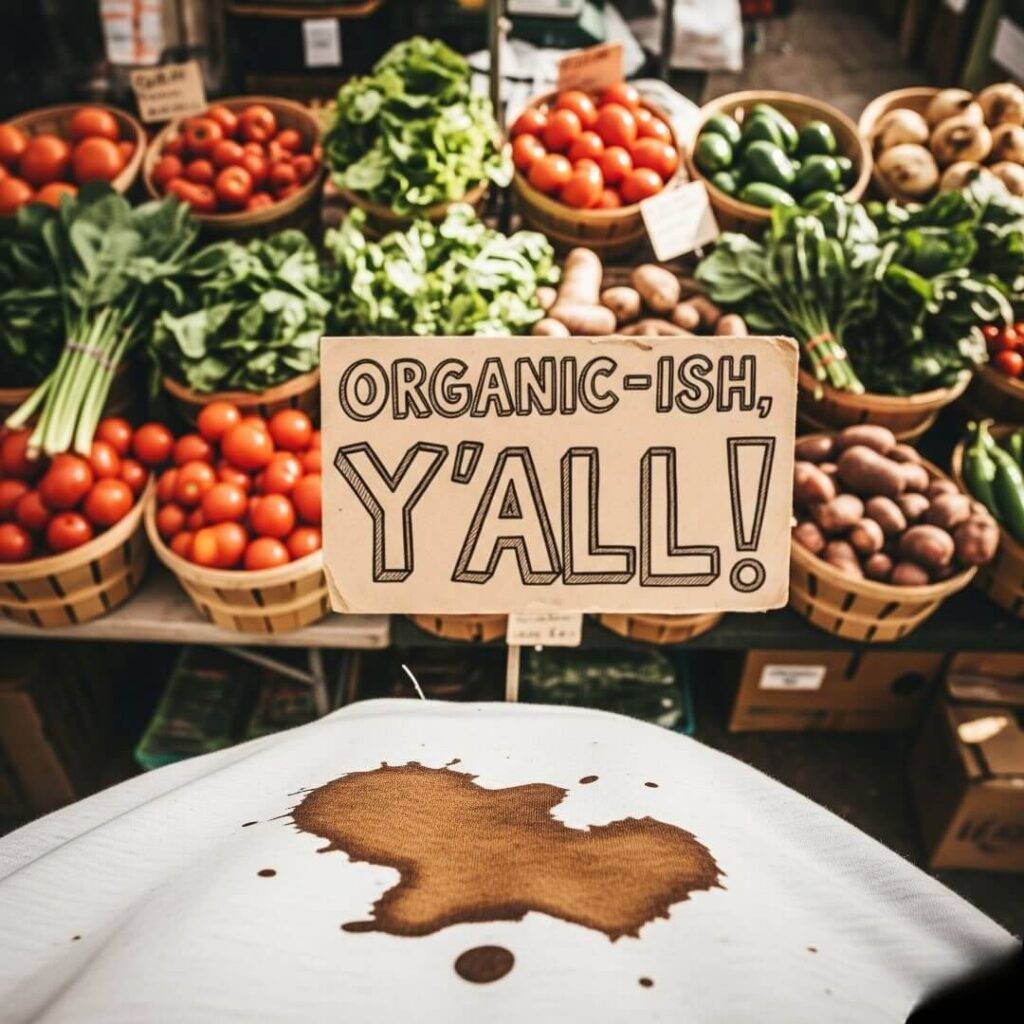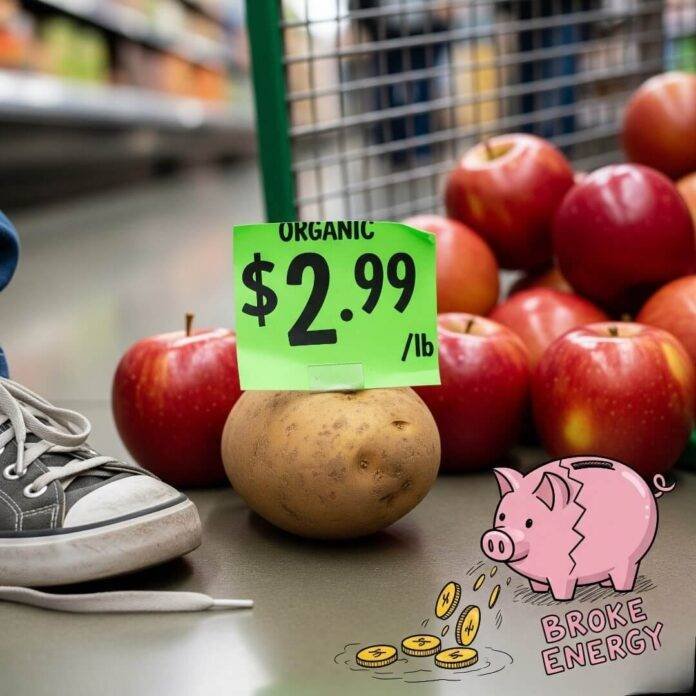Organic vs non-organic is, like, my own personal hell in the produce aisle. I’m at a Kroger in Austin, my tote bag’s got a hole in it, and I’m legit freaking out over whether to grab the organic potatoes for $5 a bag or the non-organic ones for $2. The store smells like overripe melons and stress, and I’m clutching a crumpled napkin with my grocery list scribbled in pen that’s running out. I’m just a dude trying to eat better without going broke, and this organic vs non-organic thing’s got me acting unwise. Ever just stare at a spud and question your whole existence? Yeah, me too.
Last week, I had this super embarassing moment. I’m holding an organic sweet potato, all perfect and $3 for one, and I’m like, “Man, I could get a whole pile of non-organic ones and still buy a taco.” But this guy with a cart full of organic spinach gives me this judgy vibe, like I’m trashing the planet. So, I grab the organic one, get home, and it’s… meh. Kinda starchy. Was it worth it? Prolly not.
Why I’m Weirdly Obsessed with Organic vs Non-Organic
Organic Produce: Is It Just Hype?
So, organic produce is grown without all the nasty pesticides and fake fertilizers, and it’s supposed to be better for you and the earth. I read this thing on Healthline that says organic might have a few more nutrients, but it’s not like I’m gonna turn into a superhero. I’m in my tiny Austin apartment, munching a non-organic apple that’s just as juicy as the organic one I blew my budget on. It’s sitting on my scratched-up table, and I’m wondering if I got played by the organic label. Like, am I healthier, or just poorer?
Organic feels like a whole mood sometimes. Like, “Look at me, I’m saving the world!” I’m all for it, but my wallet’s like, “Bruh, calm down.” I learned the hard way that organic ain’t always better. I bought organic raspberries once, and they went moldy in, like, two days. Non-organic ones? Lasted a week. What’s up with that?

Non-Organic: My Broke Butt’s Bestie
Non-organic produce is my budget’s MVP. It’s got pesticides, sure, but it’s not like I’m eating straight-up poison. The USDA says non-organic stuff’s gotta pass safety checks, so I’m not sweating a non-organic carrot. I’m chomping one now, and it smells earthy and fresh, even though it’s humid as heck outside my window. Austin summers, y’all.
But here’s where I mess up: I’m trash at washing my non-organic stuff. Like, I’ll rinse it for a hot second and be like, “Good enough.” I saw this EPA guide about scrubbing produce, and now I’m paranoid I’ve been eating chemicals my whole life. Anyone else just half-ass the veggie wash? Be real.
My Kinda-Sorta Tips for Organic vs Non-Organic
Here’s what I’ve kinda learned from my grocery store meltdowns:
- Dirty Dozen Deal: The Environmental Working Group lists produce with the most pesticides. Raspberries, spinach? Maybe go organic. Carrots, apples? Non-organic’s fine if you scrub ‘em.
- Mix It Up: I buy organic for stuff I eat raw, like lettuce, and non-organic for stuff I cook, like potatoes. Saves money without feeling like I’m killing the planet.
- Farmers’ Markets Are Dope: There’s this market in Austin where I get organic-ish produce for cheap. The vendors are chill, and I feel like I’m supporting real folks, not just some big brand.

Organic Food Cost vs. My Sad Wallet
Is Organic Food Cost Worth the Drama?
Organic food cost is a straight-up kick in the teeth. My grocery bill makes me wanna cry when I go full organic. Like, $7 for organic strawberries? I could get a burger! But then I think about health and the environment, and I’m like, “Fine, whatever.” This Harvard article says organic might cut pesticide exposure, but non-organic’s not gonna kill me. I’m so torn, y’all. I wanna do good, but my bank account’s like, “Nah, fam.”
Non-Organic Wins (and Total Fails)
Non-organic produce has saved my broke self so many times. I made this bomb stir-fry last night with non-organic peppers and onions, and it was straight fire. But then there was that time I bought non-organic lettuce and found a freaking bug in it. A BUG! I yelped so loud my neighbor texted me to shut up. Organic doesn’t mean bug-free, but I’m still shook.

Wrapping Up My Organic vs Non-Organic Rant
So, is organic vs non-organic worth the extra dough? Man, I’m still a hot mess over it. I’m just a guy in Austin, trying to eat decent without selling my bike. Organic produce feels like the “right” choice, but non-organic keeps my wallet from sobbing. Mix it up, wash your stuff, and don’t stress too hard. Got thoughts? Hit me up in the comments, ‘cause I’m dying to know what y’all think.
Outbound links :



















































